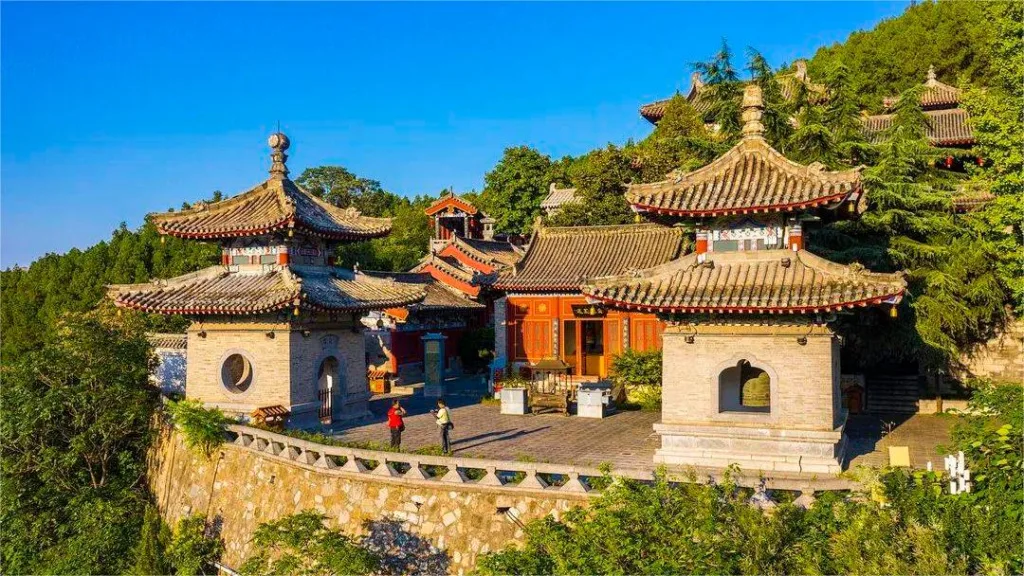洛阳香山寺 - 门票、开放时间、位置和亮点


Xiangshan Temple (香山寺), the foremost of the ten temples of Longmen Mountain, holds a significant place in Korean Weishizong Buddhism as the ancestral temple where the revered Indian monk, the “Founder of East Asian Yoga,” Yuan Ce, is buried. Originally, it was the tomb and pagoda courtyard of the Indian monk Dipo Harati. During the Wu Zhou period, it was expanded into a temple and officially named “Xiangshan Temple.” Empress Wu Zetian often visited, and the poet Bai Juyi contributed substantial funds for its restoration, enhancing its prestige.
Towards the end of the Yuan Dynasty, Xiangshan Temple was destroyed. It was later rebuilt in a different location during the Kangxi reign of the Qing Dynasty, where Emperor Qianlong praised it as “the first among the ten temples of Longmen Mountain.” He even erected an imperial stele pavilion, which still stands within the temple grounds. However, during the late Qing Dynasty and early Republic of China, Xiangshan Temple fell into disrepair. In 1936, the temple was reconstructed, and a two-story building was erected within it to celebrate the fiftieth birthday of Chiang Kai-shek. Chiang Kai-shek and Soong Mei-ling often retreated here during summers, and this building, located on the southeast side of Xiangshan Temple, came to be known as the “Chiang-Soong Villa.”
目录
基本信息
| 预计游览时间 | 0.5 - 1 小时 |
| 票价 | 龙门石窟门票包含在门票中,门票价格为 90 元人民币 |
| 开放时间 | 7.00 – 17.00; Last admission: 16.30 |
地点和交通
Xiangshan Temple is located within the Longmen Grottoes, whose specific address is 13 Longmen Middle Street, Longmen Town, Luolong District, Luoyang, Henan Province, China. To get there, you can take bus 53, 60, 71, 81, 99, 118, Tourist Line 2, Tourist Line 3, or Tourist Line 4, and get off at Longmen Shiku Stop (龙门石窟站).
Highlights of Xiangshan Temple
Hall of Nine Elders (Jiulaotang)

The Hall of Nine Elders, located within Xiangshan Temple on Longmen Mountain, serves as a prominent gathering place. Bai Juyi and his eight friends, including the venerable Hu Gao, Ji Jiao, Zheng Ju, Liu Zhen, Lu Zhen, Zhang Hun, and Li Yuanshuang, collectively known as the “Nine Elders of Xiangshan,” spent their days chanting and composing poetry in the Hall of Nine Elders. Their verses praised the landscapes of Longmen Mountain and the spiritual ambiance of Xiangshan Temple.
Mahavira Hall (Daxiong Baodian)

At the heart of Xiangshan Temple lies the Mahavira Hall, also known as Daxiong Baodian. This hall is the focal point of the entire temple complex, where monks gather for daily practice and rituals. Inside the Mahavira Hall, a statue of Gautama Buddha, the founder of Buddhism, is enshrined. “Daxiong” is a title bestowed upon the Buddha, indicating his all-encompassing wisdom and his ability to subdue all evil forces. The presence of Gautama Buddha in the Main Hall symbolizes the embodiment of the Three Jewels of Buddhism: the Buddha, the Dharma (teachings), and the Sangha (monastic community).
Bell and Drum Tower (Zhonggu Lou)

The Bell and Drum Tower is a traditional architectural feature found in Chinese temples, typically used for timekeeping and ceremonial purposes. There are two types of Bell and Drum Towers: those within palace compounds and those in urban centers. They are often two-story structures. In ancient China, palace Bell and Drum Towers were used not only for timekeeping but also for regulating ceremonial etiquette during court gatherings.
Vlog about Xiangshan Temple
龙门石窟的其他景点

奉先寺

百花园

景山寺石窟

雷古台石窟

大日如来佛像

蒋宋别墅

金井寺

古阳洞

莲花洞

宾阳洞

万佛洞

黔溪寺

医疗处方洞